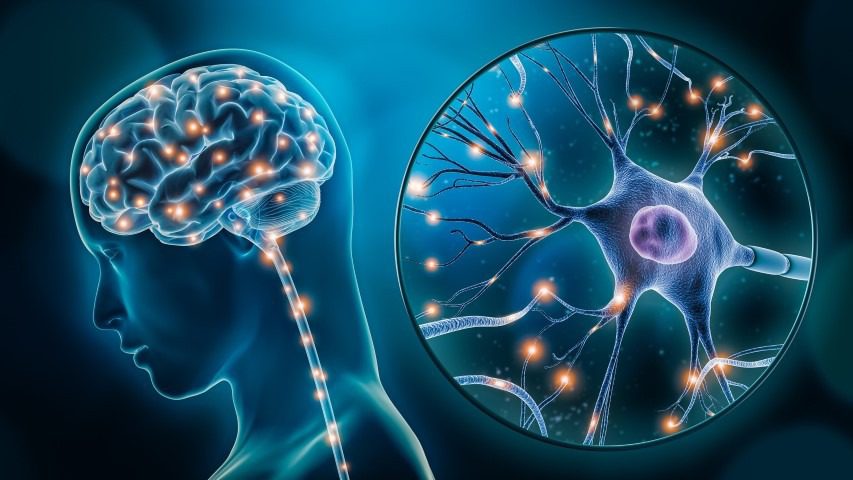Regulation of the nervous system is the key to life satisfaction
Regulation of the nervous system is a discipline that enables our body and mind to return to equilibrium after we have experienced stress or trauma. Without this ability, our body can remain “buried” in a state of arousal, anxiety or even lethargy. This condition arises because our autonomic nervous system, as a natural response to stress, activates the autonomic nervous system – specifically the sympathetic nervous system (fight or flight) or the parasympathetic nervous system (freezing). This is a natural reaction, but the problem arises when we remain “engrossed” in these feelings and cannot return to normal.

Trauma, whether it is a single major trauma (such as an accident) or an accumulation of minor stressful events, can change the way our nervous system functions. At the physiological level, trauma can disrupt the natural flow of regulation. When we are dealing with trauma, our system can become hypersensitive and constantly “on edge,” which makes us prone to overwhelming emotional reactions or, on the other hand, to feeling emotionally detached. This dysregulation does not go away on its own, but can be exacerbated over time, impairing our ability to live a fulfilled and dignified life.
The importance of regulation is that it enables us to deal with life’s challenges in a healthy way. When we are regulated, we feel in control of ourselves and our reactions, which means that we do not experience life as a constant struggle. Instead, we feel capable of handling stress and move forward, knowing that we have the tools to return to a state of serenity.
The Difference Between Regulating and Suppressing Emotions
What does regulation mean in practice?
Making room for emotional reactions: Regulation does not mean suppressing emotions, but rather creating space to experience them safely. If, for example, a person finds themselves in a situation that triggers a strong feeling of anger or sadness, instead of reacting impulsively or completely blocking the feeling, they can learn to stay with their emotion long enough for it to be felt, to flow and be released through the body without drama or escalation. This means that anger will no longer become explosive, and sadness will not lead to a withdrawal from the relationship – instead, a healthy balance will be found.Recognizing proper sensations: A key aspect of regulation is being aware of what is happening in our body. When we are surprised, our body sends signals, such as a quick breath, tightness in the chest or twitching of the muscles. By recognizing these signals, we become more aware when we need to breathe deeply or practice regulation. For example, a person may notice how their heart beats faster during a stressful situation, which is a sign that their sympathetic nervous system is taking over control. Through practice, they can learn how to use their breathing or gentle body movements to return to a state of serenity.
Step by step out of numbness: Some people develop a “freezing” strategy due to trauma – the feeling of emotional numbness or the inability to react to stress. In such cases, regulation can mean a gradual return of sensation in the body. For example, a person who has experienced a serious trauma may feel how, during daily interactions, they withdraw into themselves and feel as if they are losing touch with their own emotions. By learning how to recognize these moments, through conscious breathing, meditation or focusing on a specific part of the body, you can begin to regain a sense of presence and connection with reality.
Examples from everyday life
Effective response to stressful business situations: Imagine a person who regularly experiences stress at work due to high demands or conflicts with colleagues. Before developing the ability to regulate, the stress would have overwhelmed them and led to a chronic feeling of anxiety, frustration or even emotional breakdown. Through regulation, this person can learn how to remain calm during moments of stress, recognize the moments when they need to get up and breathe, and return with greater clarity and focus. This not only improves language and work efficiency, but also reduces long-term negative health effects, such as insomnia or problems with digestion.
Better communication in personal relationships: A person who is in a state of dysregulation often reacts too quickly to emotional irritations in relationships. For example, after an argument with a partner, they could become withdrawn and not communicate, or they could lash out in a spiral of anger and shame, which makes it even more difficult to solve the problem. When she learns to regulate her nervous system, she will be able to recognize the physical signs of overwhelming emotions (such as a throbbing neck or accelerated breathing) and use breathing, stretching or grounding techniques to calm her system. This will enable her to stay present in the conversation with her partner, clarify misunderstandings and feel more confident and connected.
Overcoming social anxiety: Many people with trauma experience feelings of anxiety in social situations because their nervous system overreacts to unfamiliar stimuli. Through regulation training, a person can learn how to “ground” themselves when they feel anxiety in a social situation, focusing on bodily sensations and directing their attention to their breathing or to how their feet are touching the ground. With time, there will be greater peace in social situations and renewed confidence in our ability to deal with stressful situations.Regulation is a process that is learned through practice and enables us to live life with a greater sense of security, stability and connection to our bodies and emotions. Over the years, this process leads to a significant improvement in the quality of life on a physical, emotional and mental level.
Keywords: Regulation of the cardiovascular system, somatic experiencing therapy, psychotherapist zagreb, gestalt therapy, Licensed therapist near me in Manhattan NYC, Affordable therapy services in New York State, Holistic psychotherapy sessions in NYC, Somatic Experiencing therapy for trauma recovery in New York City, NARM therapy in Brooklyn, Licensed couples therapy in Manhattan, Gestalt therapy near me in NYC, Marriage counseling in Queens NYC, Therapy for anxiety treatment in NYC, Experienced psychotherapist in New York, Licensed psychotherapist near me in NYC, Somatic Experiencing therapy sessions in New York, Trauma therapy and counseling in Manhattan, Gestalt therapy sessions in New York City, Therapy sessions for emotional regulation in New York, Trauma therapy near me in Brooklyn New York, Licensed mental health therapist in Manhattan NYC, Depression therapy in New York, New York City therapist experienced in PTSD treatment
*Photo: GettyImages
*Contact: Dogovori termin
*For companies: https://creativemanager.eu
When You’ve Been the Therapist in All Your Relationships









